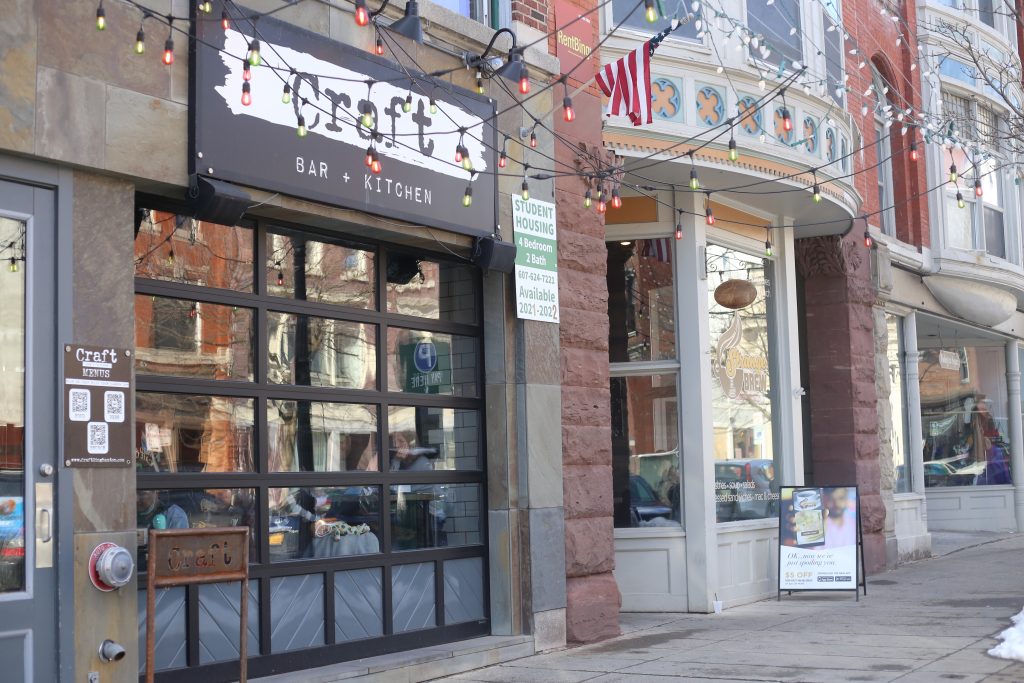New York state residents now have one extra hour to spend at their favorite bars and restaurants. NYS Gov. Andrew Cuomo has announced that all New York state bars and restaurants can stay open until 11 p.m. starting Feb. 14.
Closing times for bars and restaurants were originally restricted to 10 p.m. starting Nov. 14, 2020, due to rising COVID-19 cases. According to Cuomo’s November announcement, contact tracing identified alcohol-serving establishments as one of the three main areas of COVID-19 spread.
The extension of dining hours is in response to declining hospitalization and infection rates across New York state. According to Cuomo’s February announcement, the statewide 7-day average positivity rate has seen a 35-day consecutive decline since Nov. 30, 2020. As of Feb. 21, the statewide daily positivity rate is 3.4 percent.
Among closing time restrictions, New York state restaurants and bars are required to comply with state-mandated regulations, such as limited indoor capacities, outdoor seating spacing with a six-feet minimum and mandatory employee face coverings.
Local restaurants and bars in Binghamton reported facing many obstacles during the administration of protective statewide measures. Owners and managers of local establishments have mixed feelings about the extended closing time.
Alex Jaffe, owner of The Colonial on Court Street in Downtown Binghamton, said he lost a lot of business since the start of the COVID-19 pandemic but was optimistic about the extended curfew.
“Every hour makes a big difference,” Jaffe said. “It stinks to kick people out at 10 o’clock with a full restaurant, which is what we’ve had to do for three months.”
The one-hour extension is far from normal hours of operation for various Binghamton restaurants and bars. Jade Deluca, general manager at Lost Dog Cafe & Lounge, is looking forward to more changes.
“If we had our lounge open, it would be a little more beneficial,” Deluca said. “[The one-hour extension] hasn’t made too big of an impact, personally.”
Like many local restaurants and bars, Lost Dog Cafe & Lounge has put COVID-19 safety measures in place to ensure customer safety and satisfaction. The lounge area is closed due to state-mandated seating distancing restrictions.
“We’ve taken [the pandemic] very seriously,” Deluca said. “We space tables, do regular temperature checks, follow limited capacity guidelines, have sanitizing stations and customers can order using QR codes if they don’t feel safe having a server come to the table.”
Jaffe said customer safety is a priority and emphasized the importance of following state-mandated COVID-19 guidelines.
“We’ll follow whatever rules New York state puts in place for us in order to keep people safe,” Jaffe said.
Zachary Vinti, bar manager at Craft, cited the importance of customer support during the pandemic.
“The community’s been in full support ever since COVID-19 began, lots of takeout orders and customers,” Vinti said. “We’re looking forward to what’s next.”
According to Vinti, Craft’s staff and hours have increased independently of Cuomo’s new rule since students have come back for the spring semester. Their cooks, in particular, saw hours cut at the beginning of COVID-19 state-mandated guidelines and have since been able to increase their shifts with more customers.
Taylor Stoffel, a senior double-majoring in sociology and politics, philosophy and law, has over half a decade of experience working in the food industry and questioned the safety of increased in-restaurant dining.
“While it’s true that both employees and business owners need a source of income to survive, it’d be far safer to pay people to stay home or to continue operating on a solely takeout basis than to have dine-in open at all, let alone closer to standard operating hours,” Stoffel said. “What may be just one night after a quantifiable amount of good behavior for one person is going to be the hundredth potential exposure a waiter will be dealing with in order to barely make rent that week. I can also say from experience that customers are not on their best behavior when it comes to following safety protocol.”



